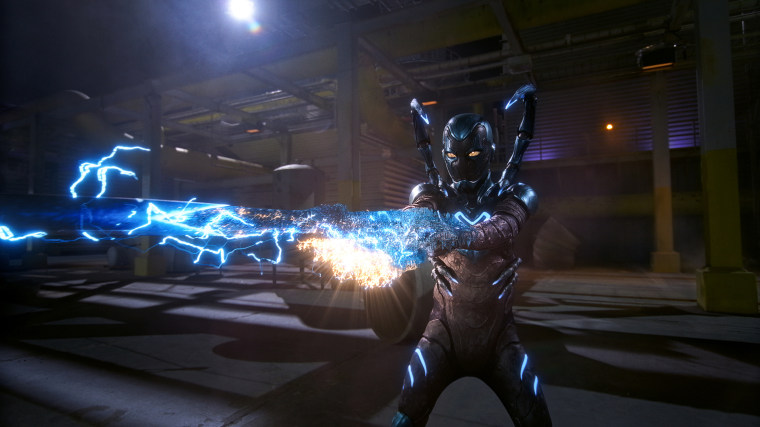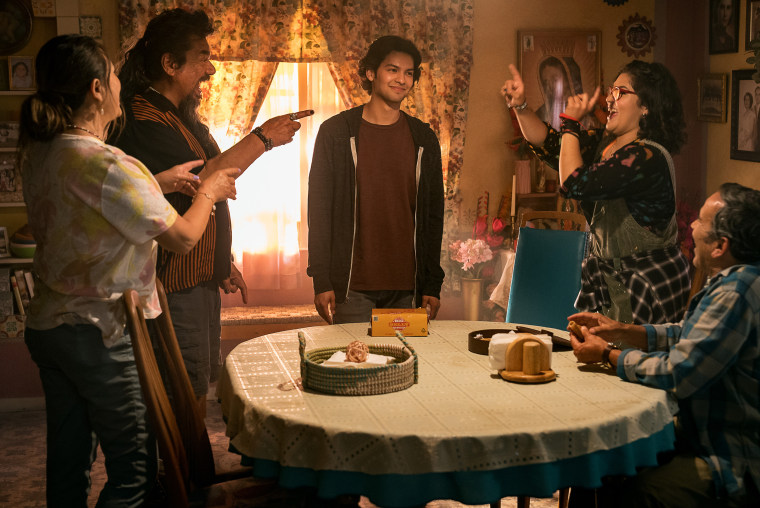“Blue Beetle,” the first live-action superhero film with a Latino lead, hits theaters nationwide Friday. It will be an opportunity for superhero and comic book fans to see Palmera City, the new fictional home for the character, come to life.
The live-action adaptation of the DC Comics character comes as writer and actor strikes are roiling Hollywood, and blockbuster films such as “Barbie” and “Oppenheimer” are making hundreds of millions at the box office. “Blue Beetle” arguably has something those movies don’t, however: Puerto Rican director Ángel Manuel Soto hopes to bank on core DC fans as well as the Latino community, which experts say he needs to win at the box office.
“Even within a country, there are different communities,” he told NBC News. “And I think that’s the beauty of it in a sense when those specificities draw questions and open conversations that enrich our lives.”

When Soto signed on to direct “Blue Beetle,” DC Comics had moved the superhero’s hometown from El Paso, Texas, to the fictional Palmera City.
Hometowns are important in telling the origin story of a superhero. Superman has Metropolis and Batman has Gotham, both New York City look-alikes. The Flash has Central City, a Midwestern hub. And even though Blue Beetle, known by day as Jaime Reyes and played by Xolo Maridueña, now hails from a town that resembles Miami, Soto said he still wanted to preserve the values that he found in El Paso.
“One of the things that we wanted to protect from El Paso was actually the power of the community,” he said. “I felt like the community in El Paso was very special.”
Viewers will see references to El Paso in the set of Palmera City, from the adobe architecture of the Reyes household to a street named after the West Texas border city.
Soto also included elements of his native Puerto Rico in creating Pago Island, where Reyes will face a pivotal moment that determines his fate as a superhero.
“So 100% we shot in El Morro and San Cristobal,” he said, referring to two of the oldest fortifications in the Americas: San Felipe del Morro and San Cristobal in San Juan, Puerto Rico. “That’s a dream that I always had since I was little. After watching 'Indiana Jones,' I always wanted to do an adventure-action set piece in one of those fortresses.”
For Soto, this childhood memory underlines the importance of connecting with your roots.
“By embracing who we truly are, maybe we can find our superpower,” he said. “And maybe we can find our own freedom.”

The film’s supporting cast will be familiar to many Latino fans, featuring Mexican American comedian George Lopez as Reyes’ tech wiz uncle Rudy and Mexican American actor Harvey Guillén as a scientist who tries to unlock the power of Blue Beetle’s alien scarab.
In an industry where Latinos are still scarce behind the camera, “Blue Beetle” also stands out with Mexican screenwriter Gareth Dunnet-Alcocer.
But, as superhero movies reach a possible tipping point with declining ticket sales, “Blue Beetle” draws on comic books as a popular gateway for diverse communities to get their stories included in mainstream American culture.
“We wanted to tell the story of displacement and gentrification within urban cities,” Soto said, “much like what happens in Puerto Rico or in the U.S. or in other parts of the world.”
Soto says he’s interested in telling stories about communities where people may not have the freedom to express themselves or be authentically who they want to be.
And “Blue Beetle” allows him to pose questions to help viewers find that freedom: “How can you be a person of light in a world that tends to be pretty dark around you?”
